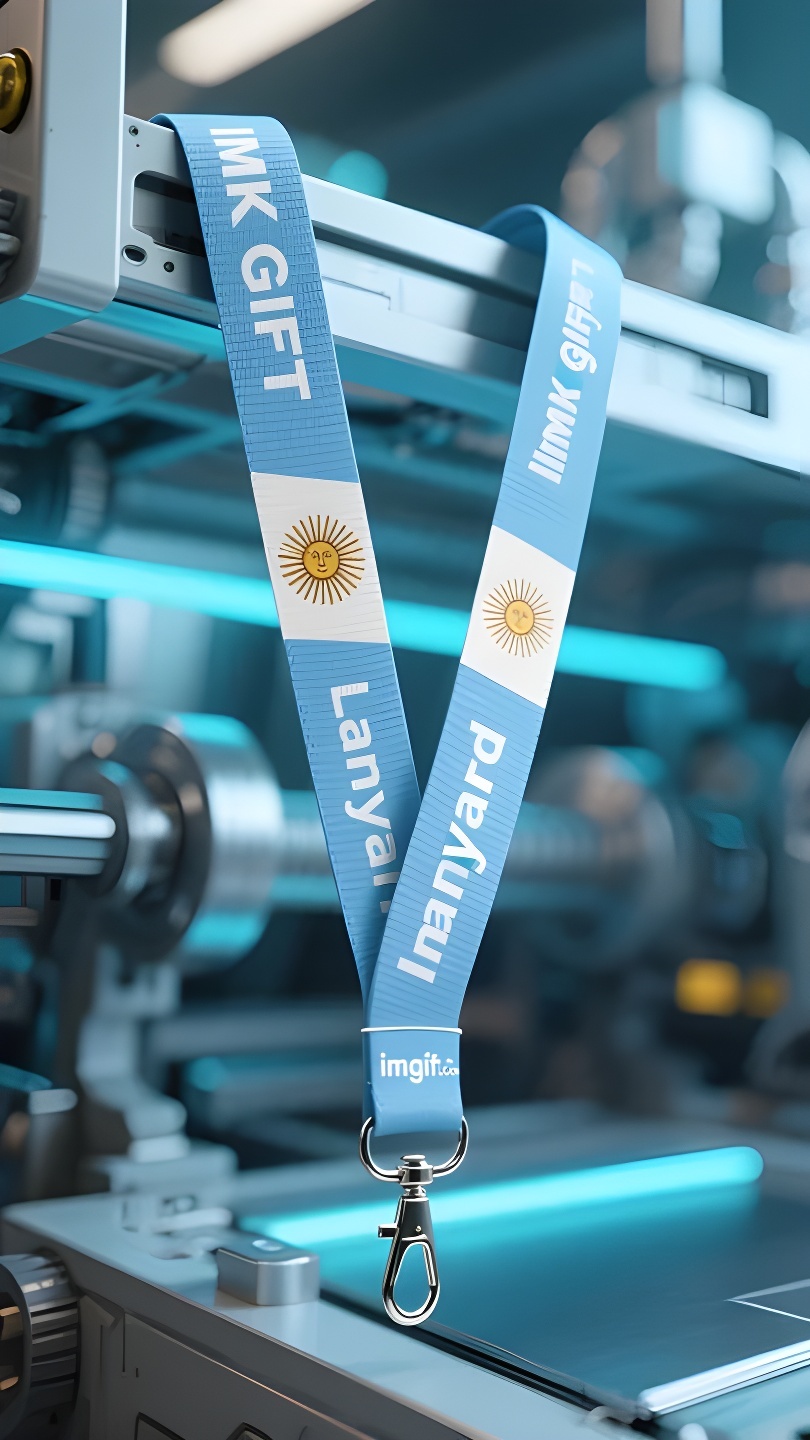in996-Tejiendo-la-urdimbre-y-la-trama-del-espíritu-nacional
▼
Cada año el 20 de junio llega según lo previsto el Día de la Bandera Argentina. Entre las banderas celestes y blancas que ondean, brilla con luz eterna el “Sol de Mayo”, símbolo de la Revolución de Mayo. Durante la ceremonia de colgar la bandera nacional y el escudo nacional, la gente siempre nota el cordón trenzado que los rodea: no es de ninguna manera una simple decoración, sino un símbolo concreto que encarna el espíritu de la fundación de Argentina. Los hilos celestes y blancos del cordón de la bandera están entrelazados para formar un patrón de diamante único, que combina con el color principal de la bandera argentina. Cada hilo está retorcido siete veces, simbolizando el momento de solidaridad cuando las siete provincias firmaron la Promesa de Libertad después de la Revolución de Mayo de 1810. Este proceso de torsión hace que el cordón sea más resistente que las cuerdas comunes, tal como la tenaz voluntad demostrada por el pueblo argentino en la Guerra de la Independencia. A pesar de la opresión colonial y la agitación económica, siempre mantuvieron la cohesión nacional. El cordón del emblema nacional está tejido con seda dorada y verde, y envuelve el cetro y el gorro de la libertad, que simbolizan la soberanía. El hilo dorado representa la vía acuática dorada del Río de la Plata, mientras que el hilo verde implica la riqueza de las Pampas. Ambos se entrelazan para formar el contexto dual de la geografía y la humanidad del país. Cuando la cuerda del emblema nacional en el balcón del Palacio Presidencial se mece con el viento, parece recordar a cada ciudadano que el destino personal ha estado vinculado desde hace mucho tiempo a los dones naturales y al patrimonio histórico de esta tierra. Estos cordones dicen la verdad en un lenguaje de urdimbre y trama: la fuerza de un país no reside en un solo hilo, sino en el tejido ordenado de decenas de millones de fuerzas. Así como cada argentino es una hebra de la fibra nacional, cuando las lanzaderas de la educación, el trabajo y la cultura se trasladan de un lado a otro, terminarán tejiendo un brocado de civilización más brillante.
Every June 20th, Argentina’s Flag Day arrives as scheduled. Between the fluttering light blue and white flags, the “May Sun” symbolizing the May Revolution shines with eternal light. During the hanging ceremony of the national flag and the national emblem, people always notice the braided lanyard wrapped around them – this is not a simple decoration, but a concrete symbol of the founding spirit of Argentina. The light blue and white silk threads of the flag lanyard are intertwined to form a unique diamond pattern, which coincides with the main color of the Argentine flag. Each silk thread needs to be twisted seven times, symbolizing the moment of unity when the seven provinces jointly signed the “Pledge of Freedom” after the May Revolution in 1810. This twisting process makes the lanyard have a toughness beyond ordinary ropes, just like the tenacious will shown by the Argentine people in the War of Independence. Even though they have experienced colonial oppression and economic turmoil, they have always maintained the centripetal force of the nation. The national emblem lanyard is woven with gold and green silk, and is wrapped around the scepter and the cap of freedom that symbolize sovereignty. The gold thread represents the golden waterway of the Rio de la Plata, while the green thread implies the richness of the Pampas. The two intertwine to form the dual veins of national geography and humanities. When the national emblem hanging rope on the balcony of the presidential palace sways in the wind, it seems to remind every citizen: the fate of an individual has long been closely linked to the natural gifts and historical heritage of this land. These hanging ropes tell the truth in the language of warp and weft: the strength of a country does not lie in a single silk thread, but in the orderly weaving of tens of millions of forces. Just as every Argentine is a strand of fiber in the national hanging rope, when the shuttles of education, labor, and culture shuttle back and forth, they will eventually weave a more brilliant civilization brocade.
每年6月20日,阿根廷国旗日如期而至,飘扬的浅蓝白纹旗帜间,那枚象征五月革命的”五月太阳”闪耀着永恒的光芒。在国旗与国徽的悬挂仪式中,人们总会注意到缠绕其上的编织挂绳——这绝非简单装饰,而是凝结着阿根廷立国精神的具象符号。
国旗挂绳的浅蓝与白色丝线交错,形成独特的菱形纹路,暗合阿根廷国旗的主色调。每根丝线都需经过七次绞合,象征1810年五月革命后七个省份共同签署《自由誓约》的团结时刻。这种绞合工艺让挂绳具有超越普通绳索的坚韧性,正如阿根廷人民在独立战争中展现的顽强意志,纵使经历殖民压迫与经济动荡,始终保持着民族的向心力。
国徽挂绳则以金线与绿丝编织,缠绕在象征主权的权杖与自由之帽周围。金线代表拉普拉塔河的黄金水道,绿丝则暗示潘帕斯草原的丰饶,二者交缠出国家地理与人文的双重脉络。当总统府阳台的国徽挂绳随风轻摆时,仿佛在提醒每位公民:个人的命运早已与这片土地的自然馈赠、历史传承紧密相连。
这些挂绳用经纬交织的语言诉说真理:国家的强韧不在于某根单独的丝线,而在于千万股力量的有序编织。正如每个阿根廷人都是民族挂绳中的一缕纤维,当教育之梭、劳动之梭、文化之梭往复穿梭,终将织就更璀璨的文明锦缎。
▼
Contact Us
📞 Tel: +0086-760-85286839
📧 Email: sales3@imkgift.com








